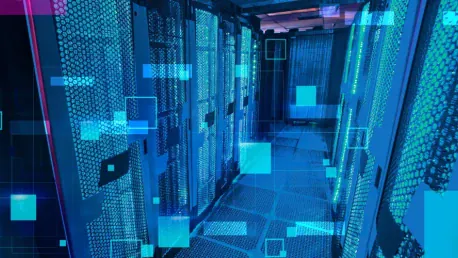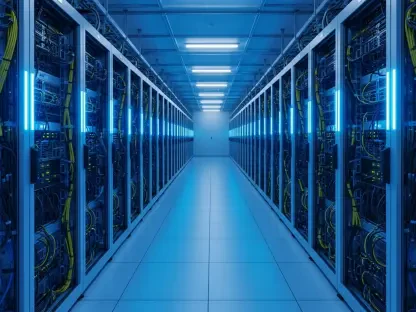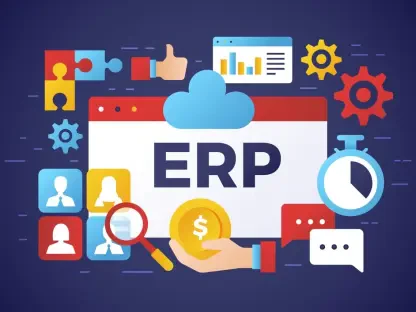In 2023, data centers in the U.S. consumed 4.4% of the nation’s electricity, with projections suggesting usage could rise to 12% by 2028, primarily due to the energy needed for chip-to-chip data transfer. Addressing the inefficiencies in this process, Ottawa-based Hyperlume is revolutionizing data center communications with its innovative microLED technology. These microLEDs offer faster data transfer speeds and lower energy consumption compared to traditional copper-based connections, providing a solution that could significantly reduce energy use in data centers.
The Founders and Vision
Combining Expertise to Tackle Challenges
Hyperlume was founded in 2022 by Mohsen Asad and Hossein Fariborzi, who combined their expertise in microLED technology, data transfer, and low-power electrical circuit design to tackle the challenges of energy consumption and latency in chip-to-chip communication. The rise of AI has exacerbated these issues, making faster and more efficient data transfer crucial. Hyperlume’s solution aims to solve latency, enhancing chip performance and unlocking previously inaccessible chip capacity. By merging their individual knowledge and skills, Asad and Fariborzi are diligently working to address one of the most pressing issues faced by data centers today.
With substantial experience in their respective domains, they have developed groundbreaking technology that promises to revolutionize the industry. Their focus on creating energy-efficient solutions while simultaneously improving data transfer speeds sets them apart from other companies in the field. As a result, Hyperlume’s microLEDs have garnered significant attention from various industries looking to optimize their operations and reduce energy consumption. The founders’ commitment to innovation and sustainability has been a driving force behind the company’s rapid growth and success in the market.
The Rise of AI and Its Impact
The increasing prevalence of artificial intelligence in many sectors has only heightened the importance of efficient data transfer systems. AI applications and workloads require immense computing power and substantial amounts of energy, often putting a strain on existing data center infrastructures. Hyperlume’s microLED technology addresses these challenges by providing a solution that not only reduces energy consumption but also improves the overall performance of data centers. This technology will enable data centers to handle larger workloads with greater efficiency, allowing for smoother and faster AI operations.
Hyperlume’s efforts to develop cost-effective solutions without sacrificing performance further demonstrate its commitment to addressing the growing demand for efficient data transfer systems. The company’s dedication to innovation is driven by the need to support the next generation of data centers, which will need to accommodate the ever-increasing demands of AI technologies. By continuously refining and advancing its microLED technology, Hyperlume aims to become a leading provider of AI connectivity solutions, revolutionizing the way data centers operate and paving the way for future advancements in the industry.
Innovative Technology
Ultra-Fast MicroLEDs and Low-Power ASIC
Seeking to develop a cost-effective solution, Hyperlume adapted affordable microLEDs to function like fiber optic connections without the high costs. The company’s “secret sauce” involves ultra-fast microLEDs paired with a low-power ASIC, enabling rapid and efficient communication between chips. This innovative approach has allowed Hyperlume to create a technology that not only reduces energy consumption but also significantly improves data transfer speeds. The combination of microLEDs and ASICs offers a unique solution that can address the growing demands of modern data centers.
By leveraging the advantages of microLEDs, Hyperlume has created a highly efficient communication system. This system allows for faster data transfer rates while consuming less energy than traditional copper-based connections. The integration of low-power ASICs further enhances the performance of the microLEDs, making them an ideal choice for data centers looking to optimize their operations. The company’s innovative approach to microLED technology has the potential to revolutionize the industry, providing a more sustainable and efficient solution for data transfer.
Potential Impact on Data Centers
The successful implementation of Hyperlume’s technology in data centers will pave the way for broader market adoption. The company’s innovative solution has attracted significant interest from various industries, including hyperscalers, cable manufacturers, and more. As these early adopters continue to refine and validate the technology, it is expected that more data centers will begin to adopt Hyperlume’s microLEDs, leading to a substantial reduction in energy consumption across the industry. This will not only benefit the environment but also help data centers achieve greater efficiency and performance.
Hyperlume’s dedication to developing energy-efficient solutions has positioned them as a leader in the field of data center technology. The potential impact of their microLED technology on the industry cannot be overstated. By addressing the energy and latency challenges faced by data centers, Hyperlume is paving the way for a more sustainable and efficient future. As more companies begin to adopt this innovative technology, it is expected that the overall energy consumption of data centers will decrease, leading to significant cost savings and increased performance.
Market Interest and Funding
Early Adopters and Strategic Partnerships
Hyperlume is currently working with a select group of early adopters in North America to refine its product. The company has attracted significant interest from hyperscalers, cable manufacturers, and various industries that could benefit from its technology. These strategic partnerships have played a crucial role in the development and validation of Hyperlume’s microLEDs, providing valuable feedback and insights that have helped shape the company’s product offerings. By collaborating with industry leaders, Hyperlume has been able to refine its technology and ensure that it meets the needs of its target market.
The successful implementation of Hyperlume’s technology in these early data centers will pave the way for broader market adoption. As more companies begin to see the benefits of using microLED technology, it is expected that the demand for Hyperlume’s products will continue to grow. The company’s innovative approach to data transfer has the potential to revolutionize the industry, providing a more efficient and sustainable solution for data centers. By continuing to work closely with its early adopters and strategic partners, Hyperlume is well-positioned to achieve widespread success in the market.
Securing Funding and Future Growth
Recently, Hyperlume raised $12.5 million in a seed round led by BDC Capital’s Deep Tech Venture Fund and ArcTern Ventures, with additional backing from MUUS Climate Partners, Intel Capital, and SOSV. The new funding will be allocated towards hiring more engineers and further developing the company’s technology to reach a larger customer base. This financial support will enable Hyperlume to expand its operations and accelerate the development of its microLED technology, ensuring that it remains at the forefront of innovation in the data center industry.
Looking ahead, Hyperlume aims to expand its bandwidth capabilities to meet the demands of future data centers. The company’s long-term vision is to become a leading AI connectivity solution provider, focusing on optical connections for chips and boards. By continuing to innovate and scale, Hyperlume plans to address the growing demand for efficient data transfer in an increasingly AI-driven world. The recent funding round has provided the company with the resources needed to achieve its goals and continue driving advancements in the field of data center technology.
Conclusion
In 2023, data centers across the U.S. accounted for 4.4% of the country’s total electricity consumption. Experts predict that by 2028, this number could surge to 12%, largely driven by the energy demands for chip-to-chip data transfer. Tackling this challenge head-on, Hyperlume, based in Ottawa, is making waves in the industry with its cutting-edge microLED technology. Unlike traditional copper-based connections, these microLEDs enhance data transfer speeds while significantly reducing energy consumption. This advancement could lead to substantial energy savings in data centers, addressing the inefficiencies that have plagued chip-to-chip communication for years. As the tech industry continues to expand, finding energy-efficient solutions is becoming increasingly critical. Hyperlume’s innovative approach not only promises to improve the speed and efficiency of data transfers but also offers a sustainable path forward, potentially easing the growing energy burden on the nation’s power grid.









